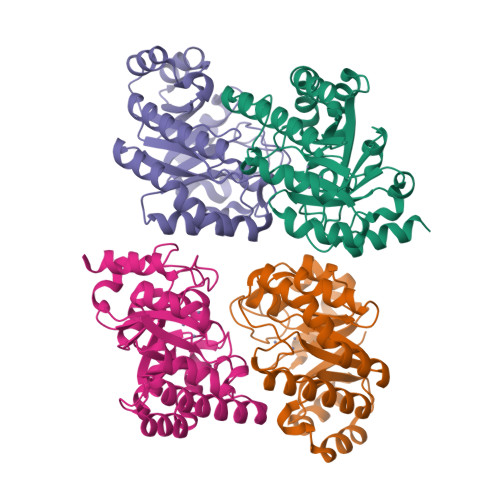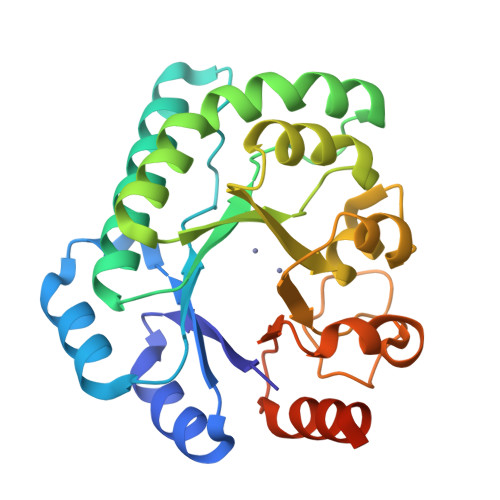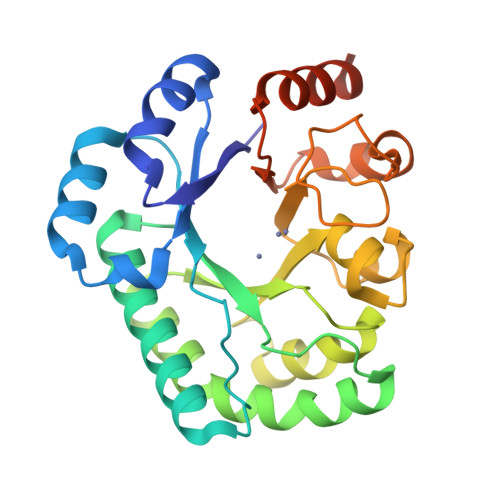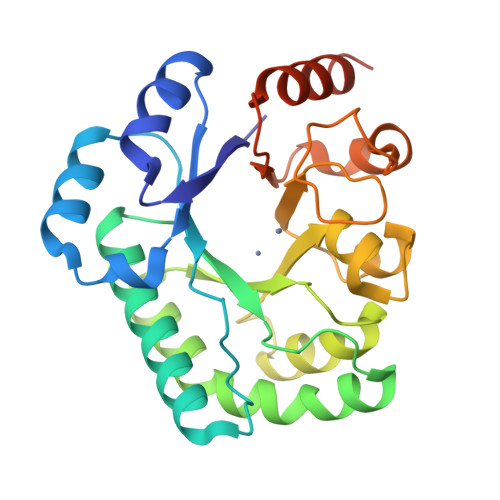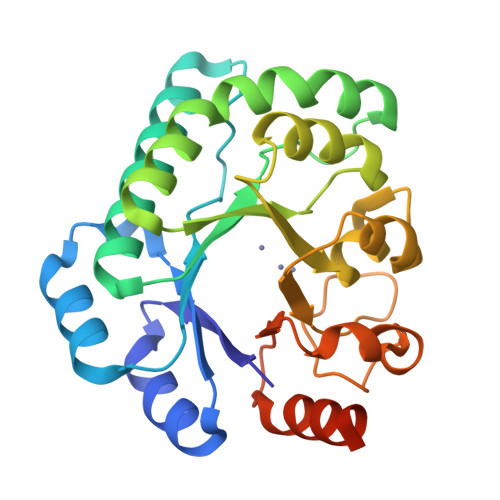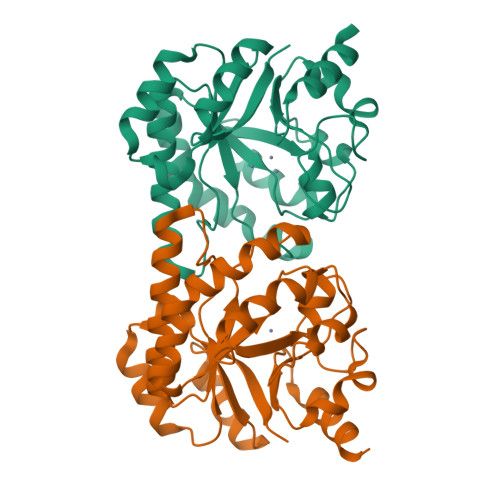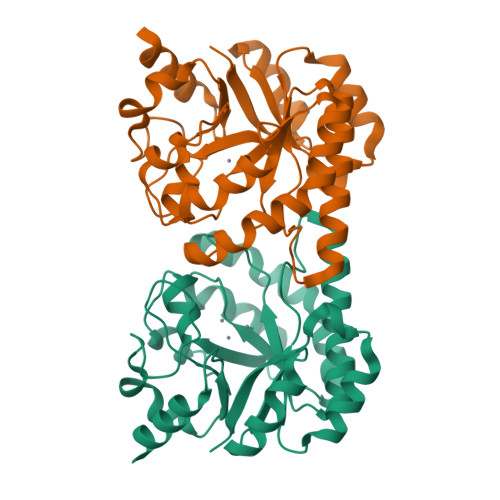In vivo, in vitro, and x-ray crystallographic analyses suggest the involvement of an uncharacterized triose-phosphate isomerase (TIM) barrel protein in protection against oxidative stress
Nakane, S., Wakamatsu, T., Masui, R., Kuramitsu, S., Fukui, K.(2011) J Biological Chem 286: 41636-41646
- PubMed: 21984829
- DOI: https://doi.org/10.1074/jbc.M111.293886
- Primary Citation of Related Structures:
3AYT, 3AYV - PubMed Abstract:
Accumulating genome sequences have revealed the existence of a large number of conserved hypothetical proteins. Characterization of these proteins is considered essential in the elucidation of intracellular biological pathways. Our previous transcriptomic analysis suggested that, in Thermus thermophilus HB8, loss of an oxidized DNA-repairing activity leads to the up-regulation of a function-unknown gene, tthb071, which is conserved in a wide range of bacteria. Interestingly, the tthb071 gene product, TTHB071, showed a significant primary structure similarity to apurinic/apyrimidinic (AP) endonucleases, which are required for the repair of oxidized DNA. In the present study, we observed that disruption of tthb071 increases the H(2)O(2) sensitivity in T. thermophilus HB8, suggesting the involvement of tthb071 in a protection mechanism against oxidative stress. However, purified TTHB071 exhibited no AP endonuclease or DNA-binding activities, indicating that TTHB071 plays no major role in repairing oxidative DNA damage. Then we determined the three-dimensional structure of TTHB071 complexed with zinc ions by x-ray crystallography. In addition to the overall structural similarity, the zinc-binding fashion was almost identical to that of the phosphatase active site of an AP endonuclease, implying that TTHB071 possesses a phosphatase activity. Based on the structural information around the zinc-binding site, we investigated the binding of TTHB071 to 14 different compounds. As a result, TTHB071 favorably bound FMN and pyridoxal phosphate in a zinc ion-mediated manner. Our results suggest that TTHB071 protects the cell from oxidative stress, through controlling the metabolism of FMN, pyridoxal phosphate, or an analogous compound.
Organizational Affiliation:
Department of Biological Sciences, Graduate School of Science, Osaka University, 1-1 Machikaneyama-cho, Toyonaka, Osaka 560-0043, Japan.








